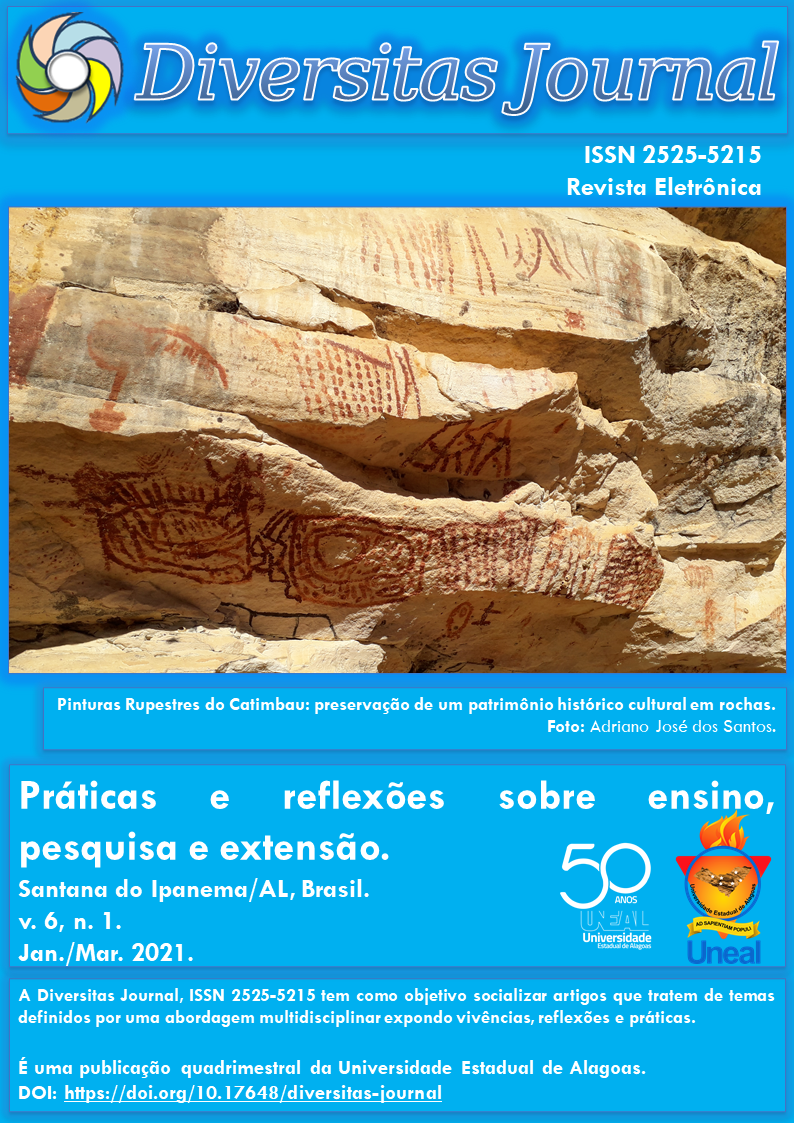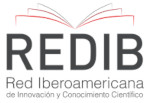Perfil metabólico de ovinos alimentados com silagem de subproduto de maracujá
DOI:
https://doi.org/10.17648/diversitas-journal-v6i1-1696Abstract
ABSTRACT: The work aimed to evaluate the metabolic profile in sheep without a defined breed standard, consuming diets composed of silage of by-products of passion fruit in substitution for hay of Tifton. The work was carried out at the Engineering and Agricultural Sciences Campus of the Federal University of Alagoas, using 28 sheep, with an average body weight of 25 kg. With a 60-day trial period, 15 for adapting the environment and management and 45 for data collection. The diet consisted of bulky Tifton hay (Cynodon ssp.) And passion fruit by-product (peel) silage (Passiflora edulins), and as a concentrate, soybean meal (Glycine max), corn meal (Zea mays) and mineral salt, provided ad libitum. The treatments consisted of levels of passion fruit residue to replace the typhoon hay (0, 20, 40 and 60%) in diets whose proportion was 60% roughage and 40% concentrate. The animals were housed in individual, identified pens, provided with a feeder and a drinking fountain. They were weighed at the beginning and end of the experimental period. The collection of spot urine, as well as blood, was performed four hours after the supply of food. The design used was completely randomized, whose data were interpreted through analysis of variance and regression through the statistical program SAS (2001). For the consumption of dry matter and body weights, an increasing linear behavior was observed. The urine volume also exhibited the same behavior. The metabolic profile of the sheep showed an increasing linear behavior, as well as the microbial protein synthesis for the replacement levels. The replacement of Tifton hay by silage of the passion fruit residue presents better metabolic profiles and microbial protein in confined sheep.
KEYWORDS: Lambs, Ruminants, Metabolism.
Metrics
References
BELENGUER A.; YANEZ, D.; BALCELLS, J.; BABER, N.O.; RONQUILLO, MG.;BELENGUER, A.D. et al. Urinary excretion of purine derivatives and prediction of rumen microbial out flow in goats. Livestock Production Science.n.77(2-3), p.127–135, 2002.
CHEN, X.B.& GOMES, M.J. Estimation of microbial protein supply to sheep and cattle based on urinary excretion of purine derivatives –an overview of technical deteils. INTERNATIONAL FEED RESEARCH UNIT. Buchsburnd. Aberdeen:Rowett Research Institute.p. 21, 1992.
FRANÇOIS, P. Desempenho, características de carcaça e a utilização da carne de ovelhas de descarte terminadas em pastagem cultivada na elaboração de embutido fermentado. Tese de mestrado. Universidade Federal de Santa Maria. Santa Maria/Rio Grande do Sul. 85 pp. 2009.
IBGE-Instituto Brasileiro de Geografia e Estatísticas. Produção agrícola Municipal2018. Disponível em: <https://sidra.ibge.gov.br/tabela/5457#resultado> Acesso em 11 de novembro de 2019.
RENNÓ, L.N. et al. Estimativa da Produção de Proteína Microbiana pelos Derivados de Purinas na Urina em Novilhos1. Revista Brasileira de Zootecnia., v.29 n. 4, pg. 1223-1234, 2000.
SANTOS, E.J. et al. Excreções de derivados de purina obtidos por duas metodologias de coleta de urina em ovinos alimentados com farelo da vagem de algaroba em substituição a silagem decapim Elefante. Nutritime Revista Eletrônica, on-line, Viçosa, v.12, n.5, p.4201-4208, set-out, 2015.
SILVA, N.V.; Costa, R.G.; Freitas, C.R.G.; Galindo, M.C.T. e Silva, L.S. Alimentação de ovinos em regiões semiáridas do Brasil. Acta Veterinária. Brasileiro, 4: 233-241. 2010.
SILVA, R.M.N. et al. Uréia para Vacas em Lactação. 2. Estimativas do Volume Urinário, da Produção Microbiana e da Excreção de Uréia. Revista Brasileira de Zootecnia. v.30,n.6:1948-1957, 2001.
SOUZA, E.J.O. et al. Comportamento ingestivo e ingestão de água em caprinos e ovinos alimentados com feno e silagem de Maniçoba. Revista Brasileira de Saúde Produção , v.11, p.1056 -1067, 2010.
Souza, A.L. et al. Casca de café em dietas para vacas em lactação: balanço de compostos nitrogenados e síntese de proteína microbiana. Revista Brasileira de Zootecnia, v.35, n.4, p.1860-1865, 2006.
Statistical Analisys System -SAS. SAS/STAT user’s guide. Version 9.0 Cary: SAS Institute Inc., 2001.
VAGNONI, D. B. et al. Excretion of purine derivatives by Holstein cows abomasallyinfused with Incremental amounts of Purines. Journal of Dairy Science, v.80, p.1695-1702,1997.
VALADARES FILHO, S.C. Digestão pós-ruminal de proteínas e exigências de aminoácidos para ruminantes. In: SIMPÓSIO INTERNACIONAL DE DIGESTIBILIDADE EM RUMINANTES, 1997, Lavras. Anais... Lavras: UFLA/FAEPE, p.87 -113. 1997
VALADARES FILHO, S.C. et al.Tabela brasileira de alimentos para ruminantes.Composição química-bromatológica de alimentos -CQBAL 3.0. 3.ed. Viçosa, MG: Universidade Federal de Viçosa, 2010. Disponível em: Acesso em: 30/04/2010.
VAN SOEST, P.J. Nutritional ecology of the ruminants. 2.ed., Ithaca: Cornell University. 476p. 1994.
VASCONCELOS, V. R. Utilização de subprodutos do processamento de frutas na alimentação de caprinos e ovinos. Em: Seminário Nordestino de Pecuária, 4, Fortaleza, CE, Anais. FAEC. CDROM. 2002.
Downloads
Published
How to Cite
Issue
Section
License
Copyright (c) 2021 Claudino da Silva Amaral, Jucelane Salvino de Lima, Kedes Paulo Pereira, José Teodorico de Araújo Filho, Izabelle Crystine Almeida Costa, Manoel Gustavo Paranhos da Silva

This work is licensed under a Creative Commons Attribution 4.0 International License.
The Diversitas Journal expresses that the articles are the sole responsibility of the Authors, who are familiar with Brazilian and international legislation.
Articles are peer-reviewed and care should be taken to warn of the possible incidence of plagiarism. However, plagiarism is an indisputable action by the authors.
The violation of copyright is a crime, provided for in article 184 of the Brazilian Penal Code: “Art. 184 Violating copyright and related rights: Penalty - detention, from 3 (three) months to 1 (one) year, or fine. § 1 If the violation consists of total or partial reproduction, for the purpose of direct or indirect profit, by any means or process, of intellectual work, interpretation, performance or phonogram, without the express authorization of the author, the performer, the producer , as the case may be, or whoever represents them: Penalty - imprisonment, from 2 (two) to 4 (four) years, and a fine. ”


















